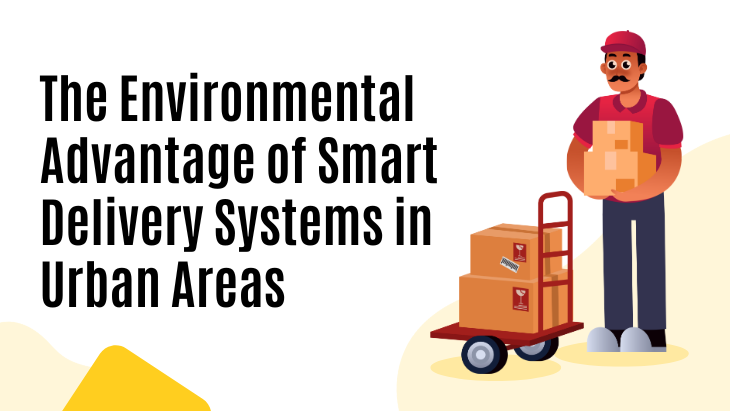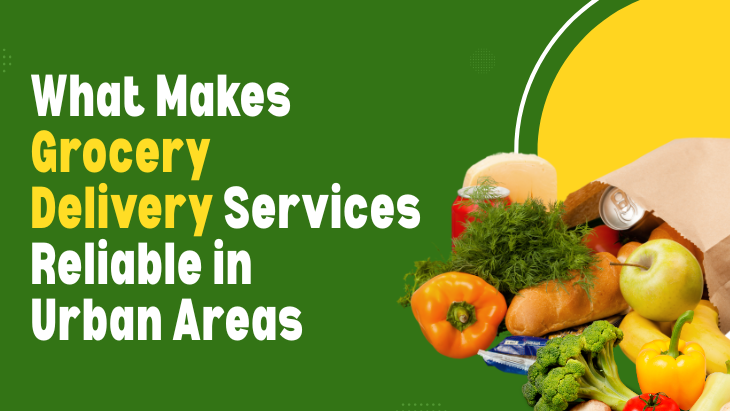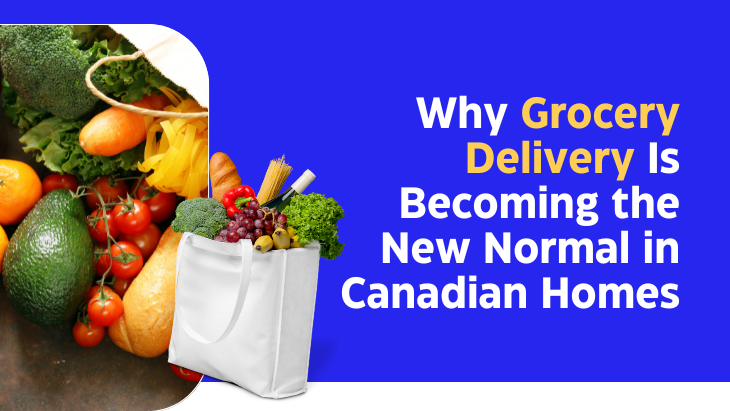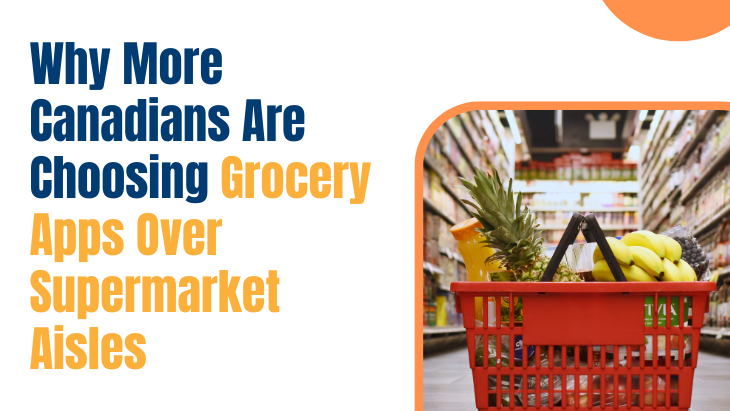With the fast-paced nature of today's digital economy, the convenience of receiving the necessities at one's doorstep has become the new norm, particularly for urban cities. Yet, the environmental impact of conventional delivery means has become a concern in increasing measure. Grocery Delivery Services In Canada With climate change and sustainability on everyone's mind, smart delivery systems are emerging as the game-changer. Where cities are expanding and environmental awareness is on the rise, as it is in Canada, these technologies are transforming Canada's grocery delivery services with an environmental spin.
The Urban Challenge of Carbon-Heave Logistics
Cities, although good for business, are logistical nightmares in terms of delivery efficiency. Partly clogged streets, stop-and-go traffic, and overlapping delivery routes result in increased fuel consumption and emissions. Conventional delivery fleets that use gasoline or diesel-powered vehicles are major generators of urban air pollution and greenhouse gas emissions. As grocery delivery demand is on the rise in cities, the old delivery model simply cannot match up to environmental expectations.
The Emergence of Intelligent Delivery Systems
Smart delivery systems are meant to address the inefficiencies of the current model. Smart systems employ artificial intelligence, real-time tracking, route optimization, electric vehicles (EVs), and aggregated shipping modes to reduce carbon footprints. Rather than various vehicles delivering to related addresses, AI can schedule more intelligent drops, cutting down on the number of trips needed. This not only makes businesses run more efficiently but also reduces vehicle emissions considerably.
Grocery Delivery Services in Canada: A Shift Towards Sustainability
Canada's grocery delivery services are at the forefront of embracing sustainability. Toronto, Vancouver, and Montreal are where grocery delivery services are employing electric vans, e-bikes, and even autonomous delivery robots. It's not only a cost-saving measure it's a deliberate move to lessen the environmental footprint of urban logistics. These delivery services are also incorporating recyclable packaging, intelligent warehousing, and customer education to encourage sustainable consumption practices.
Smart Routes Equal Less Pollution
Route optimization is one of the most critical aspects of smart delivery. AI-driven platforms take into account traffic flows, weather, delivery windows, and customer concentration to create the most efficient route imaginable. By shaving off unnecessary miles and travel time, these systems cut fuel and wear-and-tear on vehicles. In Canadian cities, where traffic and snow can get in the way, smart routing systems keep delivery emissions in line.
Adopting Electric and Green Cars
One significant environmental benefit of new delivery systems is the use of electric cars and alternative transportation. Canadian grocery delivery companies are now replacing conventional fuel-guzzling vans with EVs and e-bikes. They not only minimize noise pollution but also zero tailpipe emissions, which make them perfect for inner-city delivery. Companies are even putting solar-powered charging stations in place to enable a totally green supply chain.
Smart Warehousing and Inventory Optimization
In addition to delivery, sustainability begins in the warehouse. Advanced delivery systems depend on technology-driven, localized micro-warehouses that cut the distance between product and customer. These smaller facilities employ intelligent sensors and data analysis to track inventory in real time, so products are stored optimally and replenished only when necessary. This eliminates waste, energy consumption, and excess product movement — all for a smaller environmental impact.
Minimizing Packaging Waste with Technology
Sustainable food shopping delivery doesn't end with transport. Intelligent systems also address one of the largest city waste issues: packaging. Some Canadian grocery delivery services now utilize AI to examine order size and item type in order to decide the most effective packaging strategy. The outcome is less filler, smaller boxes, and increased use of recyclable or compostable materials. A few services even enable users to choose reusable containers, reducing the environmental footprint even further.
Fostering Consumer Involvement in Sustainability
Intelligent delivery systems not only enhance logistics but also involve consumers in sustainable actions. Consumers are now provided with choices to opt for green delivery slots periods when several deliveries are already planned in their area — lowering vehicle trips. They can also monitor their carbon savings, choose minimal packaging, or pick local produce, promoting sustainability as well as local economies.
Data Transparency and ESG Reporting
Another green advantage of smart delivery systems is the capacity to monitor and report on environmental performance. Companies can utilize smart dashboards to track carbon emissions, delivery performance, energy consumption, and packaging waste. Such openness is instrumental in fulfilling environmental, social, and governance (ESG) targets. In Canada, where requirements for emissions reporting are becoming increasingly stringent, this information enables grocery delivery services to get ahead of compliance while demonstrating their commitment to sustainability to environmentally conscious consumers.
Urban Planning Integration and Long-Term Impact
Smart delivery isn't beneficial only to companies or consumers it's good for the whole city. Optimized delivery infrastructure can cut down on the number of delivery vehicles on streets, reducing traffic and making cities healthier to breathe in. They also align with urban planning initiatives on carbon reduction, clean energy, and enhanced livability of urban neighborhoods. With the development of smart cities across Canada, grocery delivery services are becoming an integral part of the larger ecosystem of sustainable urbanization.
Conclusion
As requests for speedier, more convenient shopping keep increasing, so does the mandate to make sure that these amenities do not happen at the expense of the planet. Instant-genie Grocery delivery services in Canada are demonstrating how technology, innovation, and sustainability can go hand in hand. Smart delivery systems aren't just a fad, they're the answer to some of the largest environmental concerns facing urban areas today. Through the investment in cleaner transportation, streamlined logistics, and sustainable practices, these services are building the way for connected, conscious cities.







Post Comments